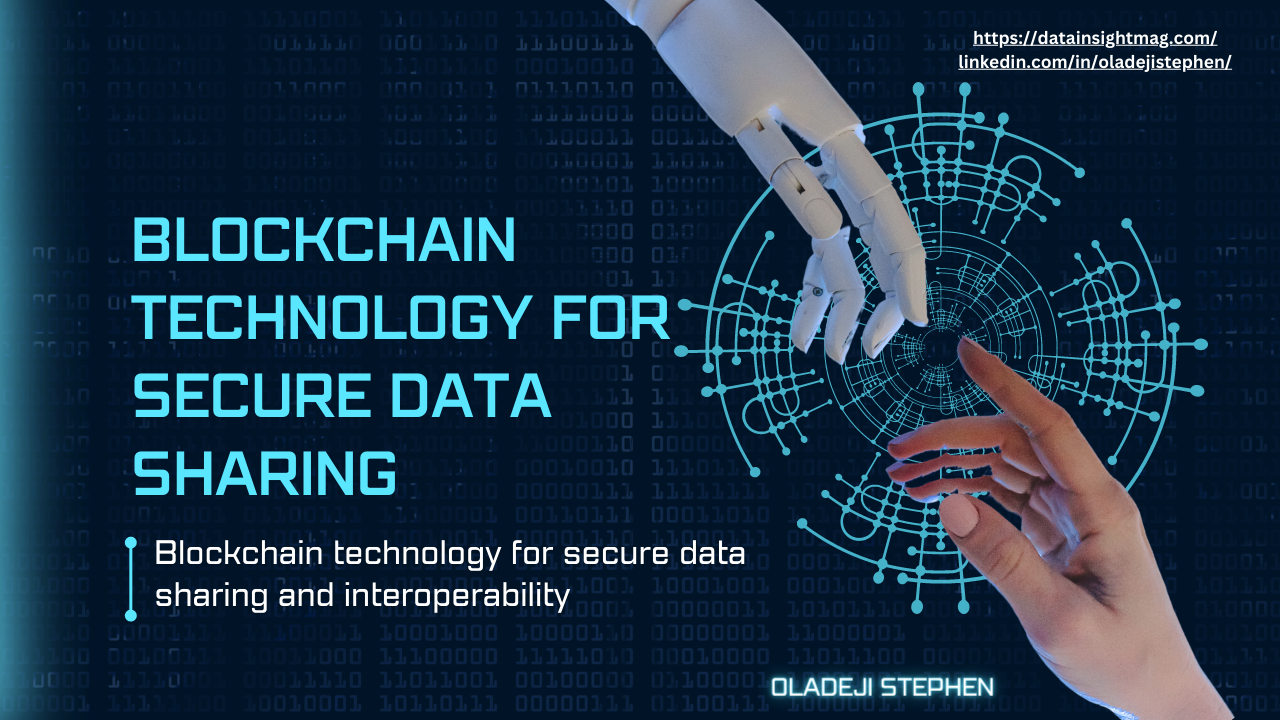Data-sharing in a blockchain is decentralized and transparent, allowing multiple parties to access and verify information. This helps to increase trust and efficiency in data transactions.
Blockchain data-sharing is built on a network of interconnected nodes, ensuring that each transaction is secure and immutable. This secure, transparent, and decentralized nature of blockchain data-sharing makes it an ideal solution for industries requiring secure and traceable data transactions, such as finance, supply chain management, and healthcare.
With its ability to streamline processes and enhance security, blockchain data-sharing is revolutionizing the way organizations manage and share data. As blockchain technology continues to evolve, its impact on data-sharing is poised to grow even further, offering new possibilities for secure and efficient data transactions across various industries.
How Does A Blockchain Facilitate Data-sharing?
Using a blockchain enables secure and transparent data-sharing. The peer-to-peer network allows direct communication between participants. The distributed ledger stores data across multiple locations for enhanced security. A consensus mechanism ensures agreement on data validity among network nodes.
Characteristics Of Data-sharing In A Blockchain
Data-sharing in a blockchain is characterized by decentralized storage, encryption, and immutability. This ensures secure and transparent sharing, fostering trust among users. The permissioned or permissionless nature of the blockchain determines access control for sharing data.
| Immutable and tamper-proof records: Data on a blockchain cannot be altered. |
| Transparency and visibility: All participants can view transactions on the network. |
| Enhanced security: Encryption and consensus mechanisms secure data in blockchains. |

Challenges In Data-sharing On A Blockchain
Data-sharing on a blockchain faces challenges such as privacy concerns and scalability issues, impacting its seamless operation. Ensuring secure and efficient data transfer is key to overcoming these hurdles and enhancing blockchain’s potential. Adopting robust encryption and consensus mechanisms is vital for maintaining trust and integrity in blockchain networks.
- Scalability issues
- Privacy concerns
- Regulatory compliance
Blockchain technology has revolutionized data-sharing, but it is not without challenges. Scalability issues arise due to the size and complexity of the blockchain network, which can slow down processing times. Privacy concerns come into play because blockchain is designed to be transparent, which may not always align with the need for data confidentiality. Regulatory compliance is another challenge, as different jurisdictions may have varying regulations for data protection and sharing. Meeting these requirements while utilizing the benefits of blockchain can be a complex task. Therefore, it is essential for organizations to carefully consider and address these challenges to ensure successful and secure data-sharing on a blockchain platform.
Use Cases Of Data-sharing In A Blockchain
Data-sharing in blockchain has various use cases.
One of the use cases is in supply chain management. Blockchain facilitates transparent and traceable supply chain processes.
In healthcare, data-sharing through blockchain can enhance interoperability and secure patient records.
Financial services benefit from blockchain data-sharing by enabling secure and efficient transactions.
Overall, blockchain’s data-sharing capabilities have the potential to revolutionize various industries.
Potential Benefits Of Data-sharing In A Blockchain
Data-sharing in a blockchain offers increased efficiency by streamlining processes and reducing duplication. It enables cost reduction through the elimination of intermediaries and manual verification. Enhanced trust and collaboration are fostered by the transparency and immutability of shared data, promoting stronger partnerships and reducing disputes.
Future Outlook For Data-sharing In A Blockchain
The future outlook for data-sharing in a blockchain appears promising, with its decentralized and transparent nature ensuring secure and efficient transactions. The immutable nature of blockchain technology provides a reliable platform for sharing and accessing data, fostering trust and collaboration among users.
1. Advancements In Blockchain Technology
Data-sharing in a blockchain is poised for significant advancements. Trust and transparency, key features of blockchain, continue to enhance the sharing of information. As the technology evolves, new cryptographic techniques and consensus mechanisms are being developed to ensure the secure exchange of data. Blockchain platforms are improving scalability, enabling faster and more efficient transactions. Smart contracts, self-executing agreements embedded on the blockchain, provide an automated approach to data-sharing. Companies and industries are increasingly adopting blockchain for enhanced collaboration and streamlined workflows, which further promotes data-sharing across networks and sectors.
2. Integration With Emerging Technologies
Blockchain’s integration with emerging technologies opens up new possibilities for data-sharing. Internet of Things (IoT) devices can securely interact with blockchain to share data in real-time, enabling efficient data management and analysis. Artificial Intelligence (AI) and machine learning algorithms can leverage the decentralized nature of blockchain to access and analyze diverse datasets, leading to more accurate predictions and decision-making. The combination of blockchain with cloud computing allows for secure data storage and sharing on a global scale. Integration with other emerging technologies like biometrics and decentralized identifiers adds another layer of security to data-sharing in a blockchain ecosystem.
Frequently Asked Questions For Which Statement Describes Data-sharing In A Blockchain
What Is Data-sharing In A Blockchain?
Data-sharing in a blockchain refers to the process of distributing information across multiple nodes within the network. This ensures that all participants have access to the same data, creating transparency and trust.
How Does Blockchain Ensure Secure Data-sharing?
Blockchain uses cryptographic techniques to secure data-sharing, making it virtually tamper-proof. Each block contains a hash of the previous block, creating a chain of interconnected data that is resistant to unauthorized changes.
Why Is Data-sharing Important In Blockchain Technology?
Data-sharing is essential in blockchain technology as it allows for decentralized and transparent record-keeping. This enhances trust among network participants and enables the creation of immutable, auditable records.
What Are The Benefits Of Data-sharing In A Blockchain?
Data-sharing in a blockchain offers increased security, transparency, and efficiency. It eliminates the need for intermediaries, reduces the risk of data manipulation, and enables real-time access to shared information.
Conclusion
Data-sharing in a blockchain offers unparalleled security and transparency. By eliminating the need for intermediaries, it enables direct peer-to-peer transactions and reduces the risk of tampering or corruption. The decentralized nature of blockchain ensures data integrity and builds trust among participants.
As blockchain technology continues to evolve, its potential applications in various industries are limitless. Understanding how data is shared in a blockchain is crucial for individuals and organizations seeking to harness its benefits. Embracing blockchain technology is a significant step towards a more secure and decentralized future.

